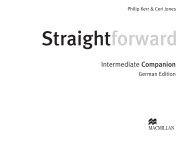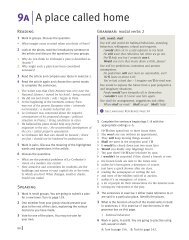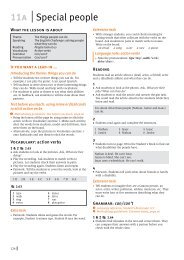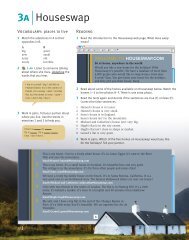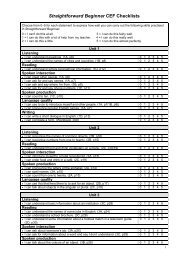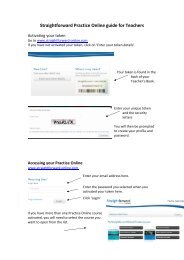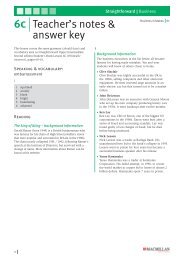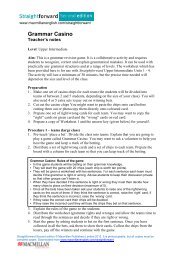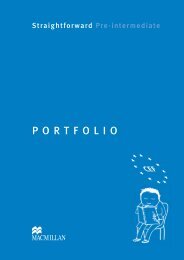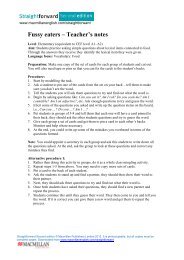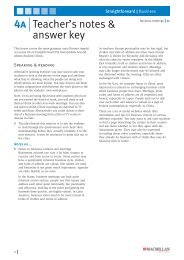Italian - Straightforward
Italian - Straightforward
Italian - Straightforward
- No tags were found...
Create successful ePaper yourself
Turn your PDF publications into a flip-book with our unique Google optimized e-Paper software.
Language reference 7Countable & uncountable nounsI nomi possone essere numerabili (countable) o non numerabili (uncountable).Nomi numerabili• hanno il pluraleThis dish has five eggs.• sono preceduti dagli articoli a/anthe al singolareCan I have an orange?• some accompagna i nominumerabili in frase affermativa.I’d like some carrots.• any si usa con nomi numerabiliin frase negativa/interrogativaDoes it have any chocolate in it?• nel dizionario i nomi numerabilisono indicati con Cpen (n/C)How much/ how manyHow much e how many si usano per parlare di quantità.How much + nomi non numerabiliHow much rice do people eat?How many + nomi numerabiliHow many countries make rice?Per parlare di quantità si possono usare anche lots, much, some, che precedonoil nome.a lot (of) / lots (of)someNomi non numerabili• non hanno il plurale, sonosempre singolariI love fruit.• non sono preceduti da a/an• some accompagna i nomi nonnumerabili in frase affermativaShe drank some water.• any si usa con i nomi nonnumerabili in frase negativa/interrogativaDon’t eat any bread.• nel dizionario i nomi nonnumerabili sono indicati con Usalt (n/U)TooToo + aggettivo significa ‘troppo’.It’s too spicy.Too + aggettivo = troppo; very + aggettivo = molto.The tea was too hot. I couldn’t drink it.The tea was very hot, but I could drink it.37not much (con nomi non numerabili)not many (con nomi numerabili)He has lots of friends.They don’t make much money.



